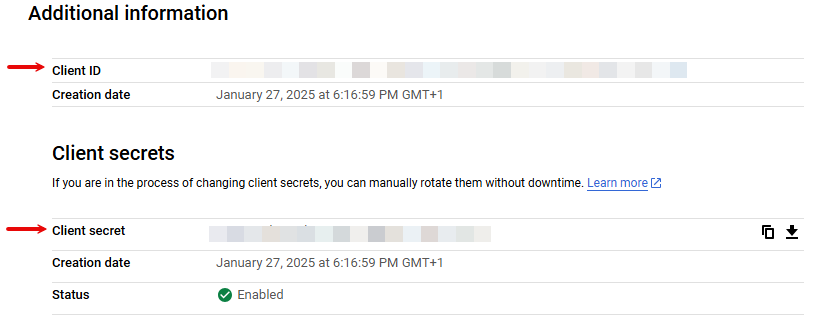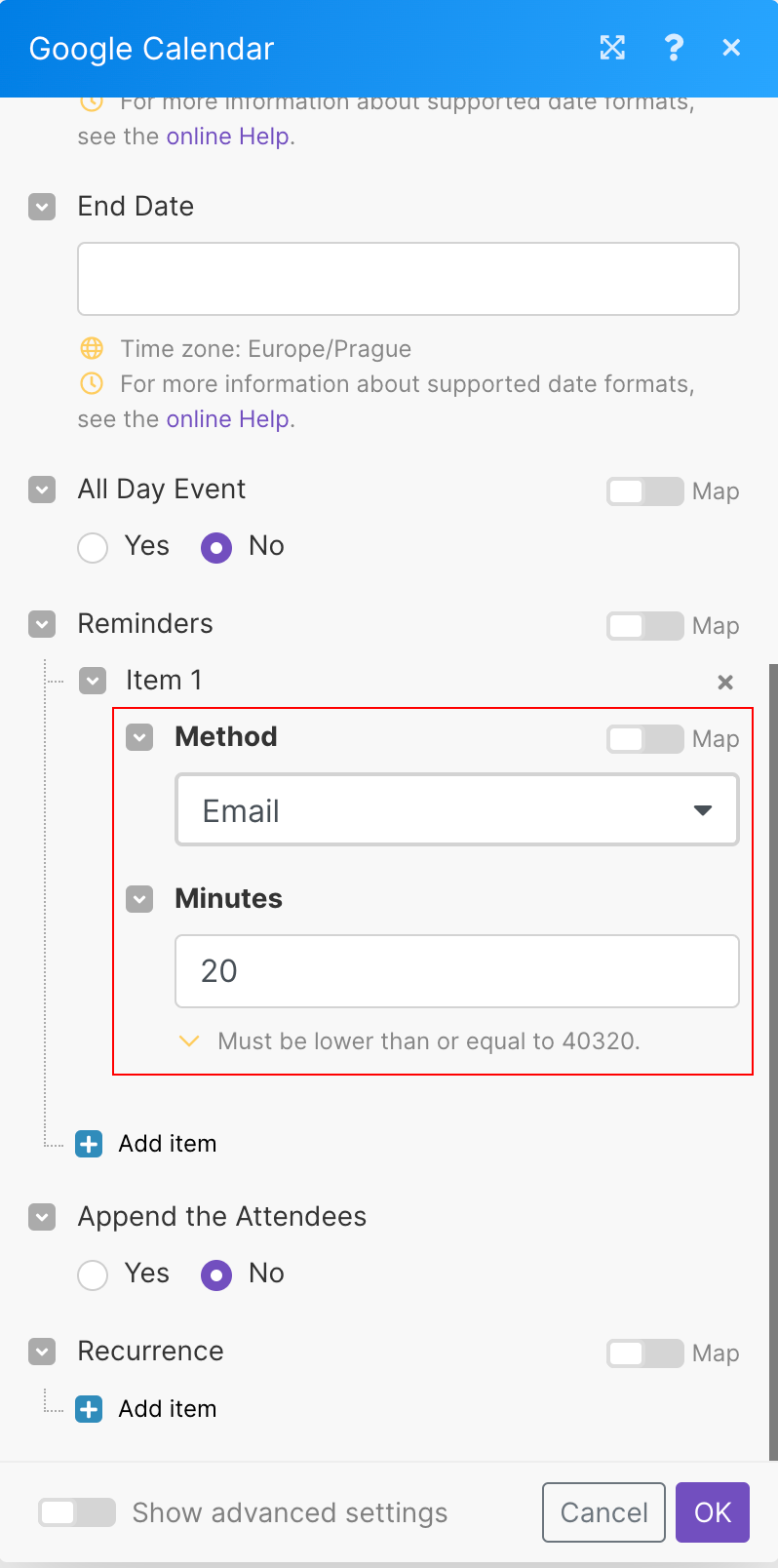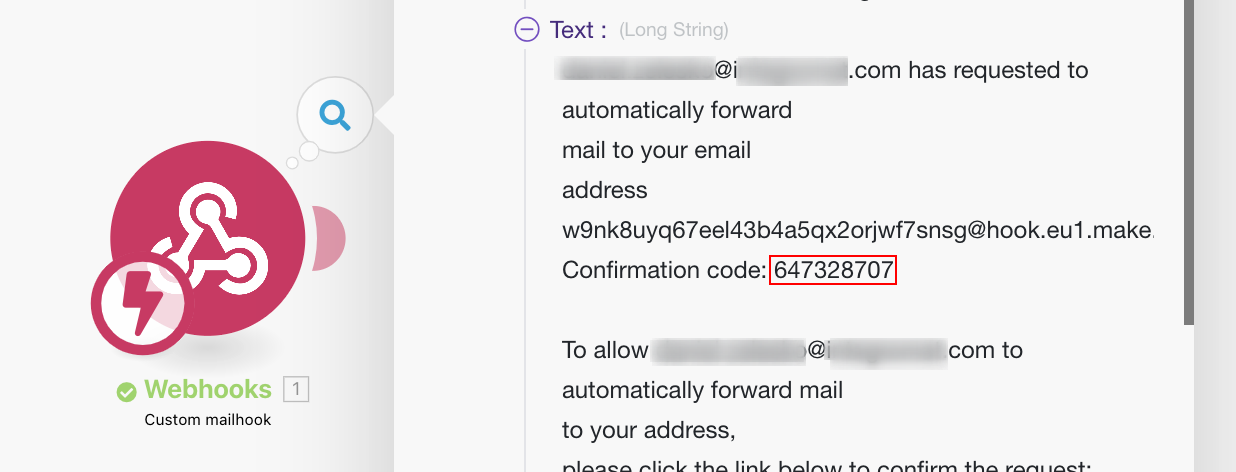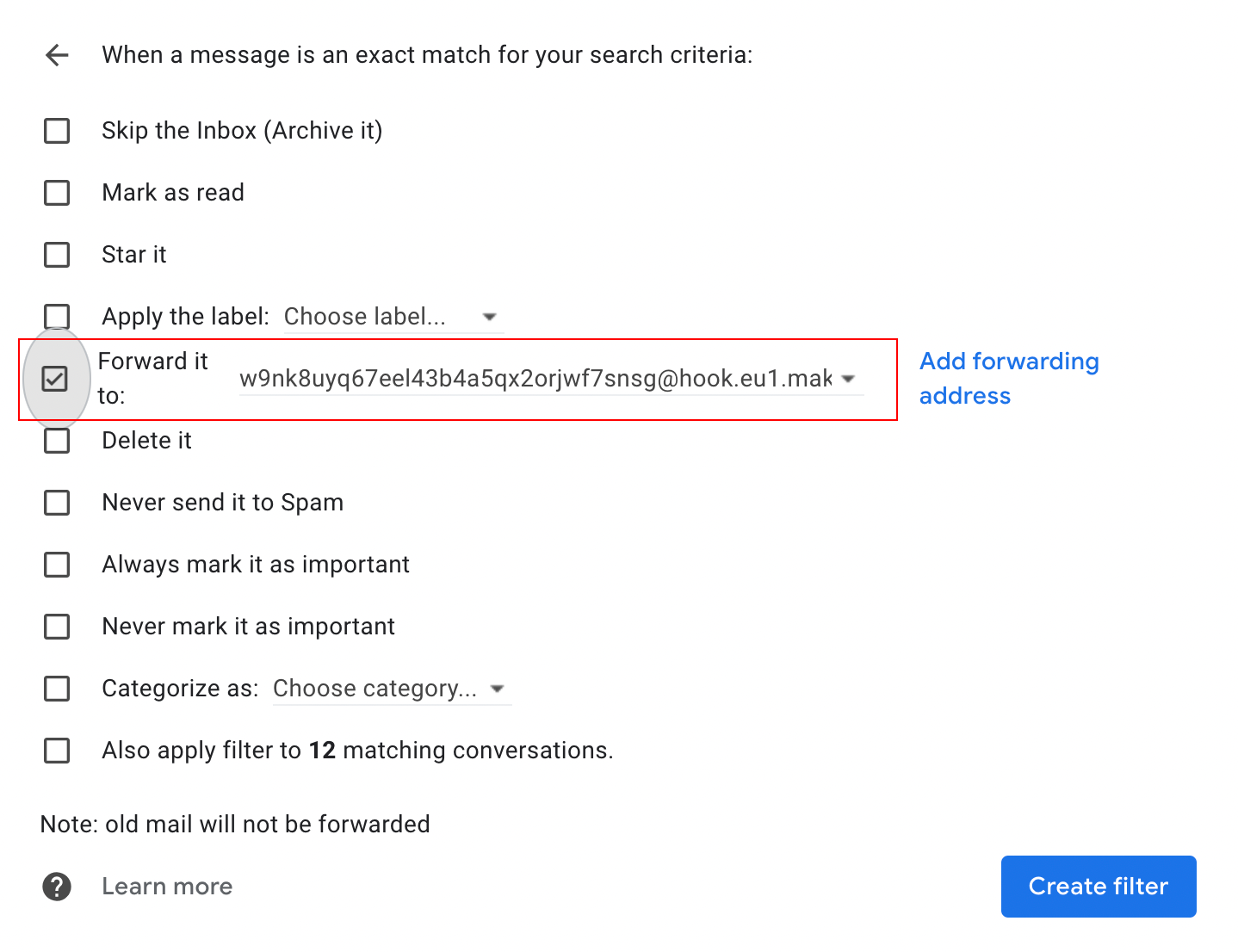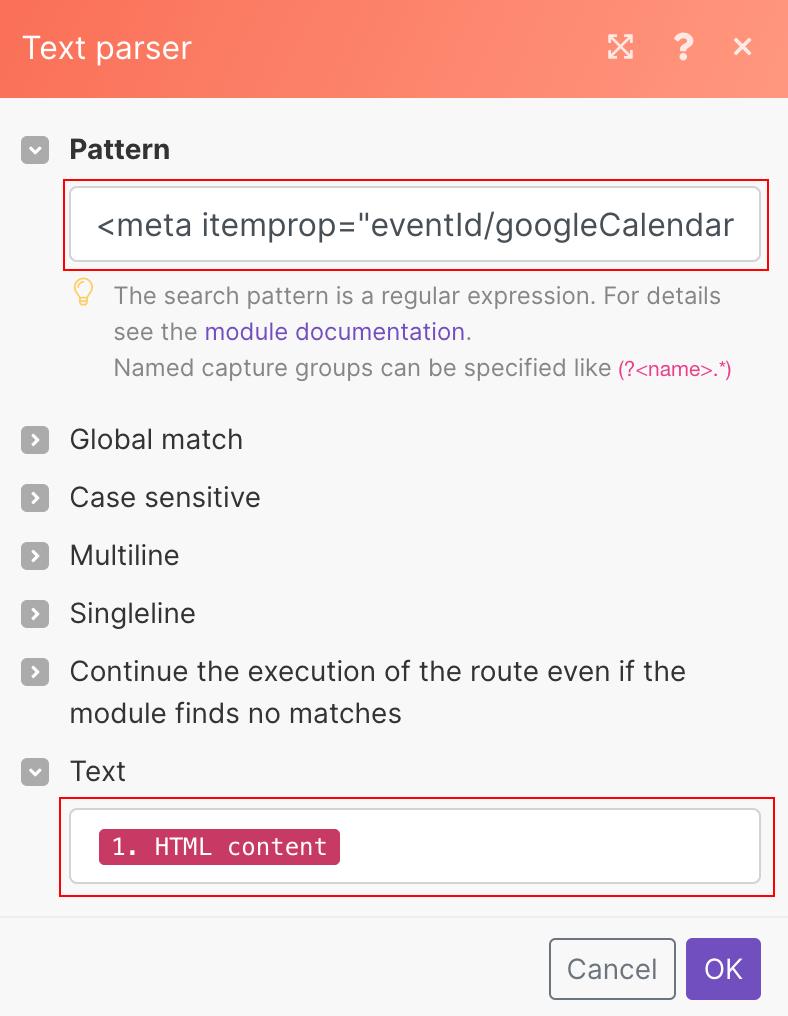With Google Calendar modules in Boost.space Integrator, you can manage events and calendars in your Google Calendar account.
To use the Google Calendar modules, you must have a Google account. You can create an account at accounts.google.com.
Refer to the Google Calendar API documentation for a list of available endpoints.
To establish the connection in Boost.space Integrator:
- Log in to your Boost.space Integrator account, add a Google Calendar module to your scenario, and click Create a Connection.
- Optional: In the Connection name field, enter a name for the connection.
- Optional: Switch on the Show advanced settings and enter your Google Cloud Platform Project client credentials. See the Create and configure a Google Cloud Platform project for Google Calendar section below.
- Click Sign in with Google and select your Google account.
- If prompted, authenticate your account and confirm access.
You have successfully established the connection. You can now edit your scenario and add more Google Calendar modules. If your connection requires reauthorization at any point, follow the connection renewal steps here.
![[Note]](https://docs.boost.space/wp-content/themes/bsdocs/docs-parser/HTML/css/image/note.png) |
Note |
|---|---|
| You may receive a connection error if your Google account has multiple APIs enabled in Google Cloud Platform. If so, create a new Google Cloud Platform Project and try to establish the connection again. See the Create and configure a Google Cloud Platform project for Google Calendar section below for more information. |
To connect to Boost.space Integrator using your own client credentials, you can create and configure a project in the Google Cloud Platform.
To create a Google Cloud Platform project:
- Log in to Google Cloud Platform using your Google credentials.
- On the welcome page, click Create or select a project > New project. If you already have a project, proceed to the step 5.
- Enter a Project name and select the Location for your project.
- Click Create.
- In the top menu, check if your new project is selected in the Select a project dropdown. If not, select the project you just created.
![[Note]](https://docs.boost.space/wp-content/themes/bsdocs/docs-parser/HTML/css/image/note.png) |
Note |
|---|---|
To create a new project or work in the existing one, you need to have the serviceusage.services.enable permission. If you don’t have this permission, ask the Google Cloud Platform Project Owner or Project IAM Admin to grant it to you. |
To enable the required API:
- Open the left navigation menu and go to APIs & Services > Library.
- Search for the following API: Google Calendar API.
- Click Google Calendar API, then click Enable. If you see the Manage button instead of the Enable button, you can proceed to the next step: the API is already enabled.
To configure your OAuth consent screen:
- In the left sidebar, click Google Auth Platform.
- Click Get Started.
- In the Overview section, under App information, enter Make as the app name and provide your Gmail address. Click Next.
- Under Audience, select External. Click Next.
For more information regarding user types, refer to Google’s Exceptions to verification requirements documentation.
- Under Contact Information, enter your Gmail address. Click Next.
- Under Finish, agree to the Google User Data Policy.
- Click Continue > Create.
- Click Create OAuth Client.
- In the Branding section, under Authorized domains, add
make.comandboost.space. Click Save. - Optional: In the Audience section, add your Gmail address on the Test users page, then click Save and continue if you want the project to remain in the Testing publishing status. Read the note below to learn more about the publishing status.
- In the Data Access section, click Add or remove scopes, add the following scope:
https://www.googleapis.com/auth/calendarYou can add scopes using:
Click Update.
- Click Save.
![[Note]](https://docs.boost.space/wp-content/themes/bsdocs/docs-parser/HTML/css/image/note.png) |
Note |
|---|---|
| Publishing Status
Testing: If you keep your project in the Testing status, you will be required to reauthorize your connection in Boost.space Integrator every week. To avoid weekly reauthorization, update the project status to In production. In production: If you update your project to the In production status, you will not be required to reauthorize the connection weekly. To update your project’s status, go to the Google Auth Platform, the Audience section, and click Publish app. If you see the notice Needs verification, you can choose whether to go through the Google verification process for the app or to connect to your unverified app. Currently connecting to unverified apps works in Boost.space Integrator, but we cannot guarantee the Google will allow connections to unverified apps for an indefinite period. For more information regarding the publishing status, refer to the Publishing status section of Google’s Setting up your OAuth consent screen help. |
To create your client credentials:
- In Google Auth Platform, click Clients.
- Click + Create Client.
- In the Application type dropdown, select Web application.
- Update the Name of your OAuth client. This will help you identify it in the platform.
- In the Authorized redirect URIs section, click +Add URI and enter the following redirect URI:
https://integrator.boost.space/oauth/cb/google/. - Click Create.
- Click the OAuth 2.0 Client you created, copy your Client ID and Client secret values, and store them in a safe place.
You will use these values in the Client ID and Client Secret fields in Boost.space Integrator.
After connecting the app, you can perform the following actions:
Event
- Watch Events
- Search Events
- Get an Event
- Create an Event
Note: For the Send notifications about the event creation field, the None option should only be used for migration use cases.
For the Recurrence field, DTSTART and DTEND lines are not allowed in this field; event start and end times are specified in the start and end fields. This field is omitted for single events or instances of recurring events.
For adding Google Drive file attachments, use the same format as in
alternateLinkproperty of the Files resource in the Drive API. - Duplicate an Event
- Update an Event
- Delete an Event
Calendar
- List Calendars
- Get a Calendar
- Create a Calendar
- Update a Calendar
- Delete a Calendar
- Clear a Calendar
Access Control Rule
- List Access Control Rules
- Get an Access Control Rule
- Create an Access Control Rule
- Update an Access Control Rule
- Delete an Access Control Rule
Other
- Make an API Call
- Get Free/Busy Information
It is possible to trigger a scenario a specified amount of time before an event with the help of standard Google Calendar email reminders and the Webhooks > Custom mailhook module.
- Use the Google Calendar > Update an event module to add an email reminder to your event:
- Create a new scenario starting with the Webhooks > Custom mailhook module. Copy the mailhook’s email address. Save the scenario and execute it.
- In Gmail, redirect the Google Calendar email reminders to the mailhook’s email address:
- Open your Gmail settings.
- Open the Forwarding and POP/IMAP tab.
- Click Add a forwarding address.
- Paste the copied mailhook’s email address, press “Next”, confirm by pressing “Proceed” in the popup window and close the dialog by pressing “OK”.
- In Boost.space Integrator, switch to the new scenario which should finish its execution by receiving the confirmation email.
- Click the bubble above the module to inspect the module’s output.
- Expand the
Textitem and search for the Confirmation code: - Copy the Confirmation code.
- In Gmail, paste the Confirmation code in the edit box and click Verify:
- Open the Filters and Blocked Addresses tab.
- Click Create a new filter:
- Set up a filter for all emails coming from
[email protected]and click Create filter: - Tick the “Forward it to:” checkbox and choose the mailhook’s email address from the list:
- Click Create filter.
- In Boost.space Integrator, you can add the Text parser > Match pattern module after the Webhooks > Custom mailhook module to parse the email’s HTML code and obtain any information you need. For example, you can configure a module like this to obtain the event’s ID:
Pattern:
<meta itemprop="eventId/googleCalendar" content="(?<evenitID>.*?)"/>Text: The
HTML contentitem output from the Webhooks > Custom mailhook module:




